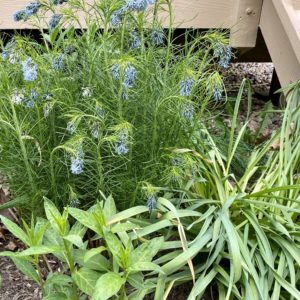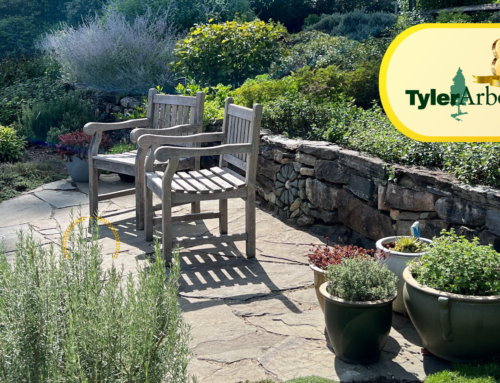 I must admit, in mid-spring I start getting antsy in my home garden. I don’t have a lot of space in my garden beds so I often wish that my daffodil leaves would just disappear! There are many other plants that I would rather have taking up that valuable real estate. It’s tempting to want to lose the leaves but I’m here to tell you to leave the leaves!
I must admit, in mid-spring I start getting antsy in my home garden. I don’t have a lot of space in my garden beds so I often wish that my daffodil leaves would just disappear! There are many other plants that I would rather have taking up that valuable real estate. It’s tempting to want to lose the leaves but I’m here to tell you to leave the leaves!
We focus so much on the beautiful spring blooms, and then the leaves, that we quickly forget that the real star of the show lies beneath. I’m going to use daffodils again as my example. Pretend you have garden x-ray vision and look through your voluminous leaves into the soil below. What do you see? Bulbs! Remembering this is the key to managing your tidiness expectations in mid-to-late spring and summer (gasp, she said summer!). Bulbs are geophytes – plants that have underground storage units to hold energy and nutrients. A bulb’s life cycle can be broken down into three phases: flowering, recharging and dormancy. The loads of leaves that you’re left with post-bloom is part of the recharging phase which is probably the most important phase of them all.
I spoke with Bess Trout, one of our talented gardeners at Tyler, for some tips on this topic:
Q: How would you diagnose the issue of bulb flowers not coming back from year to year?
A: I would ask them how they are managing the leaves of their bulbs after they are finished flowering. Many folks have picked up some bad habits when it comes to their bulb leaves: braiding, tying up or even cutting them back to make their gardens look neat and clean. That’s the answer to why your bulbs aren’t coming back! I recommend leaving the foliage just as it is. Braiding or knotting the leaves can interfere with photosynthesis or cause the foliage to yellow and die back before the bulb has absorbed enough energy to survive the winter.
Q: We use Mother’s Day as our frost-free date in this region. Is there a rule of thumb when it comes to a bulb leaf-free date?
A: Yes, July 4th is the earliest we cut our bulb foliage at Tyler. After that the leaves have produced enough energy to keep the bulb alive for another year. Mark your gardening calendars!
 Q: Wow, that’s a long wait. What other garden solutions might you have?
Q: Wow, that’s a long wait. What other garden solutions might you have?
A: I highly recommend companion planting, or interplanting your bulbs with later season flowers. You’ll love the results when you layer your garden plants. Consider companion plants like these two United States native perennials – bluestar (Amsonia hubrichtii) or purple coneflower (Echinacea purpurea). All you need to do is plant your bulbs 3 – 6 inches away from your perennials. You’ll wind up with beautiful blooms all season long, and the emerging perennial foliage will hide the yellowing bulb foliage. It’s a win-win!
Q: What would your advice be for folks who want to add bulbs to their gardens and/or yards?
A: Consider your spot. Remember, spring bulbs may only bloom for a few weeks a year, but their leaves need to stick around much longer to recharge the bulb. I would suggest planning for the foliage in your landscape, not necessarily the flowers. Whether you plant them in a lawn or a garden bed, you’ll need to make sure that you’re ok with leaving the foliage uncut until July 4th. That means no mowing if your bulbs are planted in the grass. If you don’t think you’ll be able to adhere to that rule of thumb, then you should probably pick a different spot.






